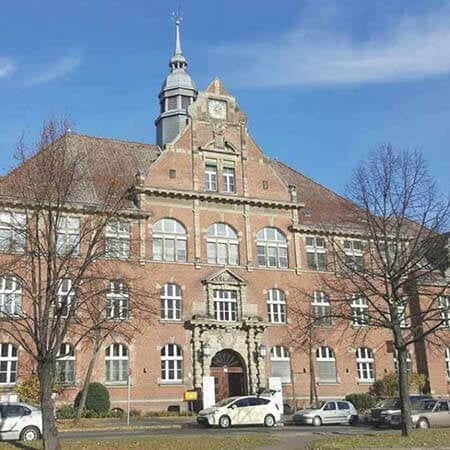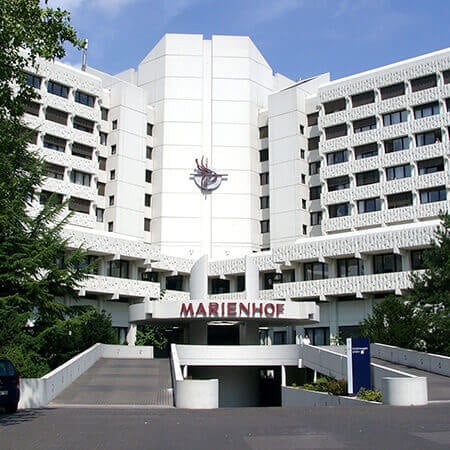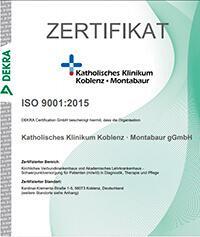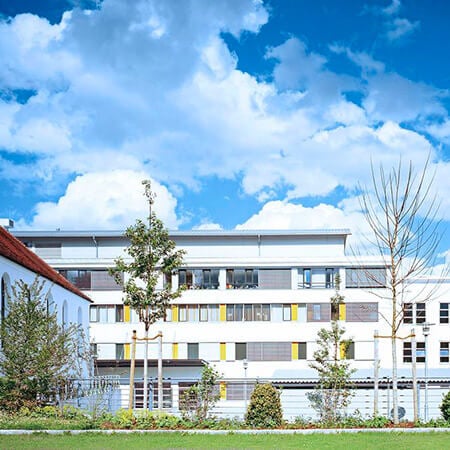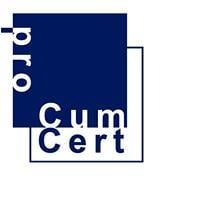There are two collateral ligaments in the human knee: a lateral collateral ligament and a medial collateral ligament. They keep the lower leg from swinging excessively inward or outward. These ligaments are rarely damaged, mainly in athletes. Grade 1-2 tears can be treated conservatively. Only grade 3 damage (complete tear) requires a surgical intervention. Basically, doctors perform the reconstruction of the collateral ligament, and much less often they resort to its repair.
Content
- Is it dangerous to damage the collateral ligaments
- Conservative therapy
- Surgical treatment
- Medial collateral ligament injury
- Rehabilitation
- Treatment of concomitant injuries
- Why is it worth undergoing treatment abroad
- Treatment in Europe at an affordable price
Is it dangerous to damage the collateral ligaments
The knee is the most vulnerable joint in the human body. It can withstand huge, sometimes outrageous loads, especially in athletes. The anatomy of the knee is quite complex, and movements in it occur in three mutually perpendicular planes.
The injuries are most often sustained by:
- Young, healthy, physically active people.
- Athletes.
- People engaged in manual labor.
The injuries of the collateral ligaments of the knee do not cause gross dysfunction of the joint, and pain after injury disappears in a few days. Many patients consider themselves healthy, do not go to the doctor, or get a wrong diagnosis in case of a visit to a physician. However, without timely treatment, severe damage to the collateral ligaments pose a threat to health, because they lead to chronic knee instability and the development of arthrosis.
If the lateral collateral ligament is damaged, then one in three patients will develop tibial nerve palsy. This pathology may cause the development of weakness of the limb muscles, impaired movement in the foot, and decreased skin sensitivity.
Conservative therapy
In the acute period after an injury to the lateral collateral ligament injury, the knee swells, hurts, and blood may appear in it. If during the diagnosis the doctors found out that the ligament is not completely torn, and there is no damage to other important anatomical structures of the knee, then a patient can be a candidate for conservative treatment. This type of therapy is safe for health and provides good results.
The main treatment methods are as follows:
- Ice – it is applied to the side of the knee in the first days after the injury, until the edema is eliminated. It should not be applied for more than 15 minutes to minimize the risk of damage to the peroneal nerve.
- Nonsteroidal anti-inflammatory drugs – the medication for relieving pain, inflammation, and swelling in the knee.
- Rest – until the damage is healed, it is worth limiting physical activity. You can not transfer weight to a sore leg for 1 week. Walking is allowed only with crutches.
- Bandage – it restricts knee movement and can be used for 3 to 6 weeks.
Surgical treatment
With grade 1-2 tear of the lateral collateral ligament of the knee, surgery is not required, but only conservative therapy is enough. The ligament is gradually being restored. The knee function is not severely affected.
Even with a grade 3 lateral collateral ligament tear, a person may not notice a significant deterioration in the knee function. Nonetheless, the risk of progression of arthrosis and the development of instability requires a surgical intervention in order to avoid complete destruction of the knee joint in the future, as well as more severe injuries during physical exertion.
There are two approaches to the treatment of the lateral collateral ligament injury:
- Repair surgery.
- Reconstruction surgery.
Repair is a rarely used treatment for a complete collateral ligament tear. It is not considered a standard treatment option. Such surgical interventions were performed in the 70-80s of the twentieth century, but then they were abandoned for a long time due to unpredictable results. The failure rate was quite high. Several years ago, operations to repair ligaments began to be performed again, as more accurate diagnostic methods appeared, which made it possible to assess the type of tear and select patients suitable for this method of correction, as well as effective methods of suturing.
Collateral ligament reconstruction
Reconstruction is the main treatment for the knee lateral collateral ligament tear. The ligament can be reconstructed with the patient's own tissues (autoplasty), donor tissues (alloplasty) or artificial materials (nylon, lavsan). In fact, this is a replacement, because the doctor creates a new ligament instead of the torn one.
The most reliable method of treatment is autoplasty. The patient's own tissues are not rejected, do not cause inflammation and are of the highest strength. Doctors in Europe usually use a semitendinosus muscle autograft. Lateral collateral ligament plastic surgery is performed mainly not using an arthroscopic technique, but through a large incision in the leg. To fix the newly created collateral ligament of the knee, the doctor needs to drill two canals: one in the tibia and one in the femur. Some hospitals also perform arthroscopic surgical interventions, which are less traumatic and safer for health.
Lavsanoplasty is another commonly used, simple and reliable method for strengthening the ligament with a lavsan tape. For the replacement of the patient's own ligament, an autograft is not required, but artificial materials are used instead of it. The advantage of this method of treatment is less trauma, since there is no damage to the donor site. The risk of complications is reduced. To replace the lateral collateral ligament, the doctor uses a 10 mm wide lavsan tape, which contains large cells. It is passed through the bone tunnels: femoral and tibial, and then the ends are sutured and fixed to the joint capsule. Additionally, transosseous sutures are used in the area of exit from the bone tunnels.
Repair of the patient's own torn ligament
Some European hospitals perform surgical interventions to repair the patient's own collateral ligament. The revival of this treatment method is associated with the emergence of new, more effective suturing methods. The technique is still rarely used, as it can be applied only for certain types of collateral ligament injuries of the knee. Nonetheless, under the condition of accurate diagnosis and correct selection of patients, the effectiveness of the intervention reaches 90%. It is minimally traumatic. In most cases, it is performed using arthroscopy. The surgical procedure does not require drilling bone tunnels due to the anchoring sutures.
It is not always possible to suture ligaments. The surgery can be performed only with fresh distal ligament injuries, the preserved length of the torn ligament of at least 90%, and the tissue of good quality. Such lesions are uncommon and occur in about 10% of patients. Another 20% can use a hybrid technique: the repair involves the use of the patient's own ligament tissues, which are strengthened with a graft.
Medial collateral ligament injury
If the knee is injured, the medial collateral ligament can tear. Even in the event of a complete tear, a person can walk, but the stability of the knee joint is disturbed. The tensile strength of the ligamentous apparatus is reduced by a quarter, and therefore the tear of other ligaments, damage to the meniscus or capsule can occur. Over time, degenerative changes in the articular cartilage progress and arthrosis develops.
Knee instability associated with the medial collateral ligament tear can be detected by the valgus stress test. It has three grades, which are determined by X-ray examination:
- Grade 1 – joint space opening up to 5 mm ("stretching" of the collateral ligament or its partial tear).
- Grade 2 – joint space opening up to 10 mm (partial tear of not only the superficial, but also the deep part of the collateral ligament).
- Grade 3 – joint space opening by more than 10 mm (complete tear of the knee collateral ligament).
The partial collateral ligament tear can be treated with conservative methods. However, the complete tear requires the repair of the ligamentous apparatus There are more than 20 known methods for plastic surgery of the medial collateral ligament of the knee. Doctors often use lavsanoplasty, reconstruction with an autograft (with the patient's own tissues). With concomitant bone pathology, the collateral ligament of the knee is fixed with a screw and a pad. The ligament can often be sutured to the meniscus.
Rehabilitation
For any degree of damage to the lateral collateral ligaments, the patient needs rehabilitation. It will be required, regardless of whether surgery was performed or not.
Below are the approximate terms of return to normal sports loads, depending on the severity of collateral ligament damage:
- Grade 1 – 4 weeks.
- Grade 2 – 10 weeks.
- Grade 3 injury and the previous surgery to reconstruct the lateral or medial collateral ligaments – 4 months.
During the first 6 weeks after the surgery, the load on the joint is very limited. At this time, exercises are carried out to strengthen the muscles of the thigh, physiotherapy and massage are used. After 6 weeks, more vigorous training begins. After about 4 months, a person can return to maximum exertion in order to restore sports form.
Treatment of concomitant injuries
Damage to only the collateral ligaments of the knee (isolated injury) occurs in only 27% of patients. In others, other structures of the knee joint are simultaneously damaged. They also undergo other surgical procedures to stabilize the knee.
Most often, together with the collateral ligaments, the anterior cruciate ligament is also torn. Less commonly, the meniscus and the posterior cruciate ligament are affected.
Doctors abroad perform reliable, safe for health operations to restore several knee ligaments at once and eliminate other injuries. For example, a doctor can simultaneously reconstruct the anterior cruciate ligament, remove part of the meniscus if it is damaged, or repair the meniscus with suturing.
Why is it worth undergoing treatment abroad
If you use the services of specialists from countries with an advanced healthcare system, your treatment will be of better quality, minimally traumatic and reliable. Modern medicine is high-tech. Hospitals abroad have at their command everything necessary to successfully treat knee ligaments: state-of-the-art equipment, experienced specialists, modern rehabilitation centers.
When going to one of the European countries, you can be sure that your health is in good hands. Almost any, even the most severe, diseases of the musculoskeletal system can be cured here without dysfunction of the limbs, with a full return to physical labor or sports, without residual pain. Doctors in countries with the advanced healthcare system prefer the most physiological methods of ligament restoration, which provide full movement in the knee, maintain sensitivity and prevent the development of arthrosis.
There are several reasons for you to undergo treatment abroad:
- Reliable plastic repair of ligaments with minimal risk of the need for repeated surgery.
- Some hospitals perform arthroscopic surgery to reconstruct the collateral ligaments of the knee. They are less traumatic as they are performed through multiple punctures in the knee area instead of one large incision.
- With some types of collateral ligament tears, their repair is possible: without drilling the bone tunnels, with full preservation of proprioceptive sensitivity, with rapid patient recovery.
- Reconstruction with lavsan tape or other synthetic materials is possible. In this case, the patient's own tendon is not required, so there is no need to inflict additional trauma during the operation.
- Surgical interventions are safe for health. The risk of damage to the peroneal nerve during plastic surgery of the lateral collateral ligament is close to zero.
- Adequate anesthesia for the operation and pain therapy for the postoperative period.
- Fast rehabilitation. A person can return to sports or physical activity after 4 months.
The treatment of knee diseases and injuries abroad is safe for health and provides good results the first time. The risk of complications requiring repeated surgery is minimal.
Treatment in Europe at an affordable price
To undergo treatment of the collateral ligament injury in one of the European hospitals, please use the services of the Booking Health company. On our website, you can find out the cost of treatment in different hospitals and compare prices in order to book a medical care program at a favorable price. The treatment of a collateral ligament injury in a European hospital will be easier and faster for you, and the cost of treatment will be lower.
You are welcome to leave your request on the Booking Health website. Our specialist will contact you and provide a free consultation on treatment in Europe. Booking Health will take care of the organization of your trip abroad. We will provide the following benefits for you:
- We will select a hospital for treatment in Europe, whose doctors specialize in treating collateral ligament injuries and achieve the best results.
- We will solve the problem of the language barrier, we will help to establish communication with your physician.
- We will reduce the waiting time for the medical care program. You will undergo treatment on the most suitable dates for you.
- We will reduce the price. The cost of treatment in European hospitals will be lower due to the absence of overpricing and additional coefficients for foreign patients.
- We will help you solve any organizational issues: we will draw up the documents, meet you abroad and take you to the hospital, book a hotel, provide interpreting services.
- We will prepare a program and translate medical documents. You will not need to repeat the previously performed diagnostic procedures.
- We will help you keep in touch with the hospital after treatment in Europe.
- We will arrange additional diagnostic examinations and treatment in a European hospital, if required.
- We will buy medicines in another country and forward them to your native country.
The world's leading doctors will take care of your health. The specialists of the Booking Health company will help reduce the cost of treatment, organize your trip, and you can fully focus on restoring your health.
Authors:
The article was edited by medical experts, board certified doctors Dr. Vadim Zhiliuk and Dr. Sergey Pashchenko. For the treatment of the conditions referred to in the article, you must consult a doctor; the information in the article is not intended for self-medication!
Sources:
Articles for Orthopaedic Practice - Orthogate
Sience Direct
